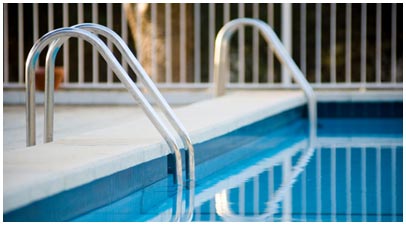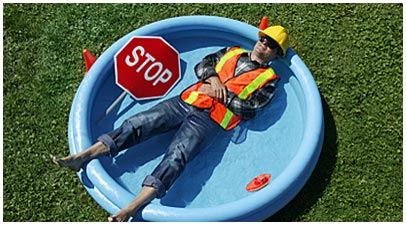Checklist
Although this checklist is to help you with checking your fence prior to a Inspector attending your property, careful adult supervision is the Number One method of preventing pool drownings. Always supervise swimmers irrespective of age and never swim alone! Always with a buddy! Our goal is to assist pool owners in obtaining a Pool Safety Certificate on the first inspection. So to assist you in complying with the pool safety laws we recommend that you go through the checklist and rectify, or have someone rectify any potential non-conforming areas prior to your inspection date.
Pool Gates
:: All pool gates swing away from the pool.
:: All pool gates self-close and self-latch from all positions. Including only being open a few centimetres.
:: Latches on the outside of the gate are a minimum of 1500mm high from the ground.
:: Latches on the outside of the gate are a minimum of 1400mm in height from the top of the lowest horizontal member.
:: Gate hinges that exceed 10mm in diameter and are at least 900mm apart or have a 60 degree hinge safety cap on the bottom hinge.
Resuscitation Sign
:: Is made of durable and weatherproof materials.
:: Is a minimum size of 300mm x 300mm.
:: Is visible from the pool area.
:: Has 000 emergency number, mentions 2 breaths to 30 compressions and includes instructions for young children and infants.
Pool Barriers
:: The barrier is at least 1200mm high from finished ground level.
:: Gaps in vertical bars and/or palings do not exceed 100mm in width.
:: Horizontal members are at least 900mm apart in the non-climb zone (or the lower one has a 60 degree angle).
:: Barriers less than 1800mm high have no climbable objects on the outside of the fence within a 900mm arc from the top of the fence upwards, outwards and down.
:: There is an additional clear area 300mm below the 900mm arc i.e. no steps, pot plants etc.
:: For vertical members more than 10mm apart, there are not any nearby horizontal surfaces which could be used as holds for climbing within 300mm on the inside
non-climb zone of the fence. For barriers 1800mm or more in height the top 900mm out and down is non-climbable on at least one side of the fence.
Climbable Objects
All climbable objects have been removed (or appropriately shielded) from the non-climb zone, additional clear area and clear area. i.e. BBQ's, outdoor furniture, pot plants retainer walls. Branches that a child could use to climb are trimmed back so that there is no chance of a foot hold. There are no protruding bolts, hinges, power points or anything that is longer or wider than 10 mm that a child could use as a toe hold for climbing.
Strength & Rigidity
:: All bars and/or palings are secured at the top and bottom rails.
:: All bars and/or palings are in good condition. i.e. not rotting, rusted.
:: Use your non-dominant hand and squeeze (not excessively) in the middle of bars to test they do not open more than 100mm.
:: All screws are tight and in place.
:: When pushed with reasonable force the fence does not collapse, deform or loosen.
Windows
:: Windows lower than 1200mm from the ground on the inside opening into the pool enclosure area are appropriately shielded or do not open more than 100mm.
Doors
There is a compliant barrier separating the house and the pool. Child resistant doorsets are no longer compliant for outdoor pools.
Please note: There are restrictions on the amount of work that is able to be done without a building application. As a general rule, alterations must not exceed a value of $3,300, must not exceed a total of 5 metres and more than 6 posts, or without approvals or inspections, 2.4 metres and includes no more than 2 posts. For more detailed information refer to Building Amendment Regulation 2006 - Minor works.
This does not cover all requirements of the pool safety regualtions, however the items listed are the most common faults that we find. |



